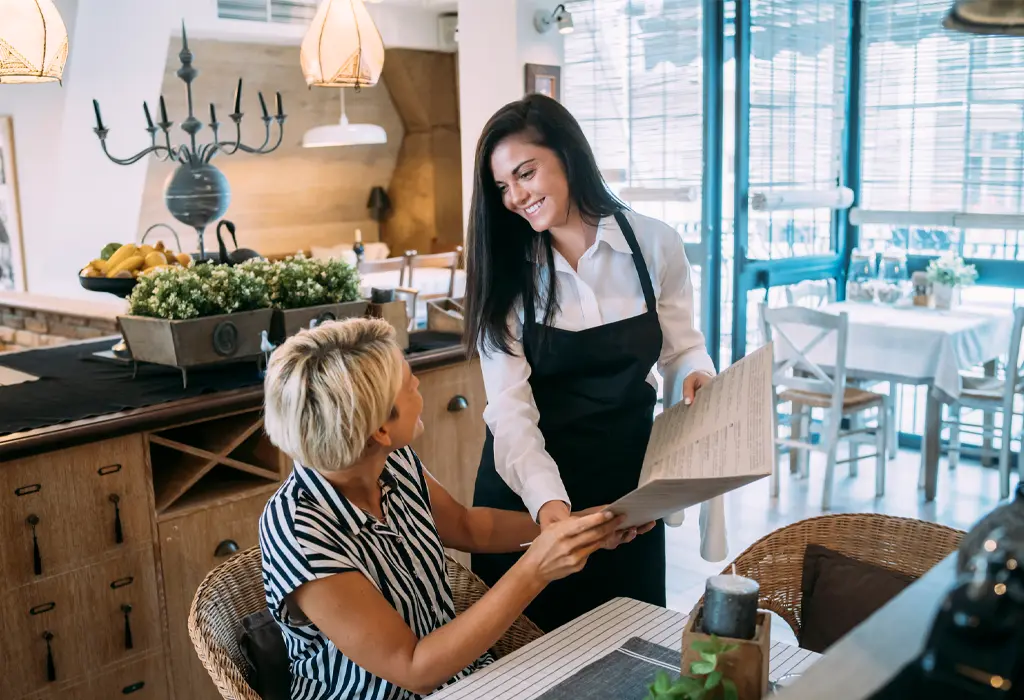
IESE Insight
Cheap and cheerful? Why low online ratings can actually produce better experiences
Data confirms that you shouldn’t overthink it, and customers and experience designers could both boost satisfaction with a simple tweak.
Have you ever tried to get a table at a hot new restaurant, found it fully booked and ended up somewhere with “just average” ratings instead? Despite this, was it ultimately a good experience? If so, this new study will come as no surprise: deviating from a preferred option can end up boosting our satisfaction. We are often pleasantly surprised by experiences with lower ratings.
That’s because when it comes to life’s pleasures — a new restaurant, a movie or a weekend away — enjoyment is influenced by our expectations as much as the product itself. With a data-centric approach, Victor Martinez de Albeniz, Clara Carrera and Manuel Sosa show that there’s a bright side to lower ratings. Their research, focused on restaurants but easily applied to other pleasurable experiences like going to a museum or reading a book, sheds light on the two-pronged way we evaluate experiences, and the interactions between the wisdom of the crowd, our own experiences, and the expectations we develop.
When the cheap and cheerful option is more memorable than the top-tier restaurant
There are two phases that matter when it comes to an enjoyable evening out: choosing and experiencing.
In choosing, we chase safety. We often base choices on our own preferences, be it location or food type, as well as informal rating benchmarks, shaped by our own past experiences and the wisdom of the crowd in the form of online reviews and aggregate ratings. The research — pulling from several years of longitudinal data tracking consumers in Barcelona and Paris (two foodie hubs) and across the platforms TripAdvisor and The Fork — built data-driven preference points for each consumer, and found that these strongly influenced what people chose.
The authors measured what level of quality people were used to (based on their own and others’ past ratings) and analyzed how that affected the restaurant they chose next, and how happy they were with their choice.
Most consumers avoided anything that fell below their personal quality benchmark — say, a 4-star average. This was due to loss aversion: people tend to protect themselves from disappointment by avoiding choices that they expect will result in worse-than-usual experiences.
Yet, what if there was a mix-up with their reservation, and when they arrived at the new oyster bar it couldn’t take them? What if they ended up at a nearby restaurant with only a 3.5 average rating? They have moved from choosing to experiencing. And when going somewhere they would not normally choose, something unexpected may happen.
When experiencing a lower-than-usual quality choice, expectations soften. People do this to protect their satisfaction, in much the same way they seek out those high ratings in the choice phase.
And those customers in the 3.5 restaurant may find they enjoy their meal and that it feels like a pleasant surprise precisely because the bar was set low. The data supports this, and instinctively we all know it’s true — it’s why we all have that film we love with the 6/10 score on Rotten Tomatoes.
Here’s a tip for clients and businesses: zig-zag across experiences
Platforms like TripAdvisor assume that the higher the rating, the better an experience will be for the consumer. Yet, this study shows that the higher the rating, the higher the probability of choice, not the better consumer experience. Instead, when consumers deviate from what’s likely, the experience quality is boosted. As a result, always recommending the “best” places can actually reduce satisfaction in the long run: people shift their expectations upward, so they ultimately find everything a little samey.
And though public ratings are great for filtering out truly bad options, they don’t entirely predict an individual’s chance of happiness. Satisfaction comes from comparing experiences to your own expectations. So, as consumers, we could all stand to gain from trying places that are a little less celebrated and being pleasantly surprised.
Though the research focuses on restaurants, the findings can apply to other experiences, from museum exhibits to film festivals. Rather than going from high to high, it’s best to vary the pace a little. For example, in Amsterdam’s Rijksmuseum, rather than heading straight from Rembrandt to Vermeer, why not detour by some lesser-known landscapes or still lifes, or visit the dollhouses?
This zig-zag approach works for curators or experience designers as well. Planning a film festival? Follow that timeless classic with an indie-circuit sleeper hit. Alternating between lower and higher experiences can produce repeated boosts and result in more happiness overall — which is always something to aspire to.
ALSO OF INTEREST:


